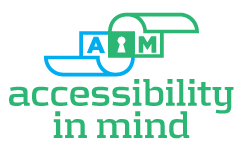A great example comes in creating accessible hyperlinks in documents. Here's what Health and Human Services (HHS) asks in their "PDF File Checklist", section 1.8:
Do all URLs contain the correct hyperlink and display the fully qualified URL (i.e.,http://www.samhsa.gov and not www.samhsa.gov)
That's pretty unambiguous. HHS was the first of the government agencies to interpret the regulation and create a checklist, but that doesn't make their interpretation correct, or make documents following their interpretation more accessible than documents that see it differently.
Below is a contrary- and persuasive- argument on hyperlinks from the Social Security Administration, in their guide to creating accessible documents. Consider their logic:
When a Screen Reader is reading text and there is a link, the software will insert the word "Link" in front of the text to alert the user that this is a selectable hyperlink. Another way that Screen Readers can access the links that are in a document is for them to call up a list of links. This list will display only the text that has been marked as a link. It is important that the list of links makes sense to the user when it is read out of context. That is, the name of each link should make sense in the list when it is read in isolation.
Consider the following four examples of the same text and
same link rendered using different methods:
1. Please read The SSA Online Accessibility Policy. Click Here
2. Please read The SSA Online Accessibility Policy.
http://www.ssa.gov/webcontent/accessibility.htm
http://www.ssa.gov/webcontent/accessibility.htm
3. Please visit The SSA
Online Accessibility Policy.
4. Please visit The SSA Online Accessibility Policy:
http://www.ssa.gov/webcontent/accessibility.htm
http://www.ssa.gov/webcontent/accessibility.htm
If every link in the document was rendered using method #1,
the list of links would read like this:
• Click Here
• Click Here
• Click Here
• Click Here
It is easy to see that individual links are not possible to
read out of context. If every link was rendered using method #2, the list would
read like this:
• http://www.ssa.gov/webcontent/accessibility.htm
• http://ssa.gov/pgm/links_disability.htm
• http://www.section508.gov/
This list also makes no sense in context. While we might be
comfortable in normal conversation saying "go to s s a dot gov" we
generally do not say to people "go to s s a dot gov slash p g m slash
links underscore disability dot h t m". It is too long and it is too
difficult to understand. However, when the list of links is presented this way,
this is exactly how the Screen Reader will say each link.
If every link was rendered with method #3, the list would be
read like this:
• The SSA Online Accessibility Policy
• SSA Disability Benefits
• GSA's Section 508 website
Using this method, all of the links make sense when spoken
out of context. This is the best method
to use.
What is the lesson here? It's that "compliance" with Section 508 is not defined at the granular level, but a regulation that has many interpretations. Before starting any remediation project, it is best practice to query your client for any specific requirements or checklists that are to be followed. Just remember that the goal is accessibility, with compliance merely being the by-product.
What is the lesson here? It's that "compliance" with Section 508 is not defined at the granular level, but a regulation that has many interpretations. Before starting any remediation project, it is best practice to query your client for any specific requirements or checklists that are to be followed. Just remember that the goal is accessibility, with compliance merely being the by-product.

